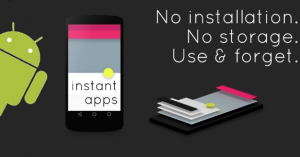-
Progressive Web Apps
Progressive Web App (PWA) was dubbed the next generation of mobile web applications. They are not bound by mobile websites like slow speeds and the need for constant Internet connection.
PWAs feel very “natural” with features including offline and full screen mode, home screen launcher, camera access and push notifications. Plus, they are faster and consume less data than mobile websites. In addition, PWAs do not require downloading and installing,
A prime example of a global brand that has decided to build Progressive Web Apps across platforms is AliExpress. Owners of this online marketplace find that their mobile commerce grows three times faster than e-commerce and want to improve the mobile experience.
The implementation of PWA resulted in an additional 104% of users on mobile devices and an 82% increase in conversion rate on iOS alone.
-
Android Instant Apps
Considering the large number of mobile applications in the app store, Google realized that it would be very difficult for users to download and update new applications every time, for different purposes. That is why the company introduced Instant Apps.
 With Android Instant Apps, users can only download the most necessary parts of the application, access the rest of the content instantly via the URL, and save space on the device. Android Instant Apps is being developed in conjunction with Google’s Progressive Web App.
With Android Instant Apps, users can only download the most necessary parts of the application, access the rest of the content instantly via the URL, and save space on the device. Android Instant Apps is being developed in conjunction with Google’s Progressive Web App.
Vimeo, a video streaming platform, used Instant Apps to reduce the weight of their Android apps from the 15MB installation package to a 4 MB feature module. The application exited some libraries and used a smaller image cache library. As a result, the app provides a better experience on Android devices, and the company has witnessed a 130% increase in video access.
-
Chatbot
Chatbots become an integral part of communication applications such as Slack, Facebook Messenger or Telegram to help them interact with customers 24/7. And it’s easier than ever to build a chatbot using chat builders, from applications like AWS Lex that may require some programming knowledge, to simpler construction tools. Use existing components.
With more affordable integrations and simple chat building tools, we will see more chatbots in 2019, which will drive conversations between consumers and businesses.




